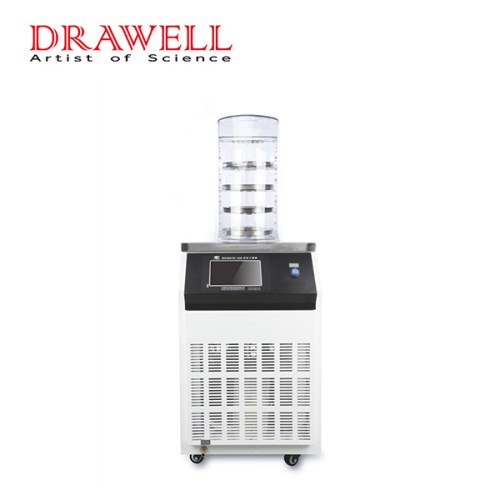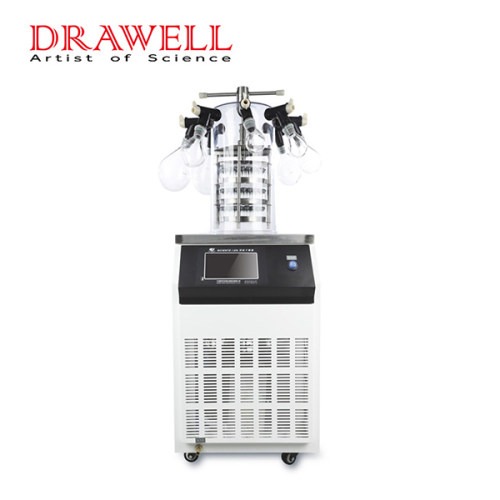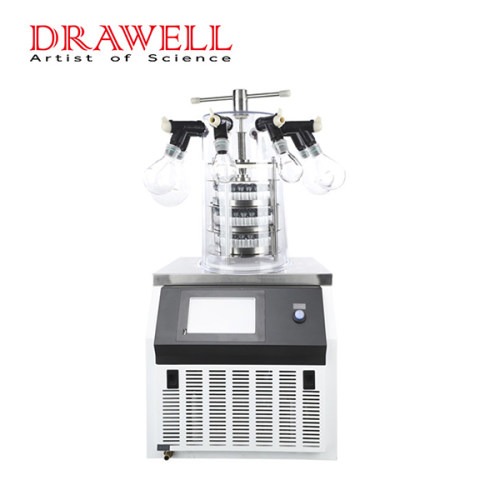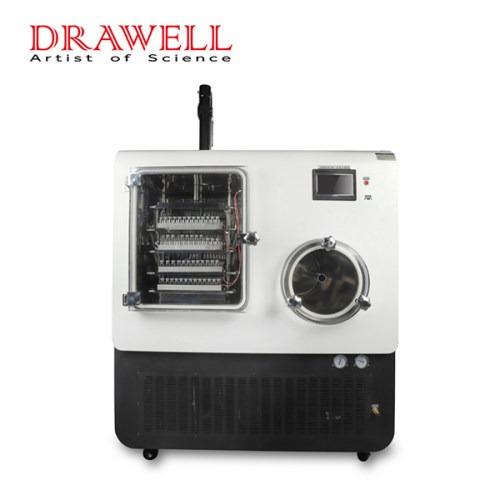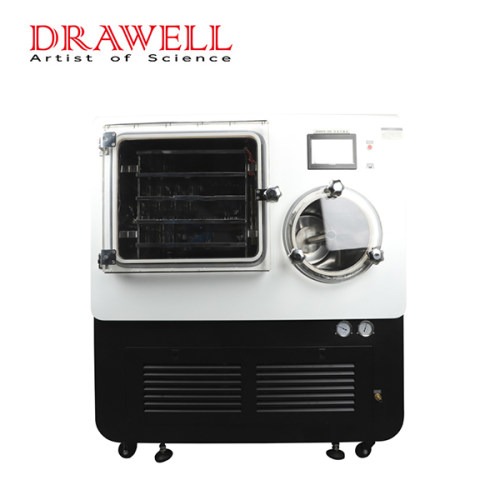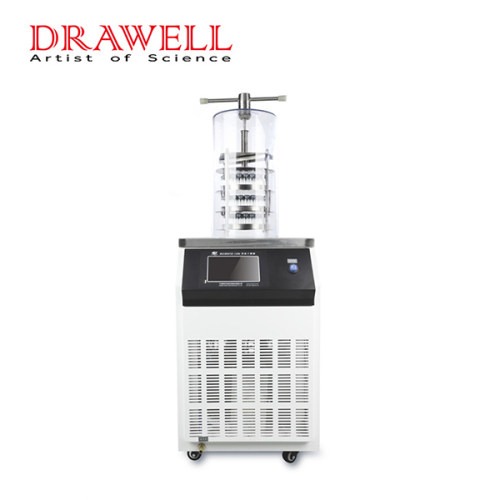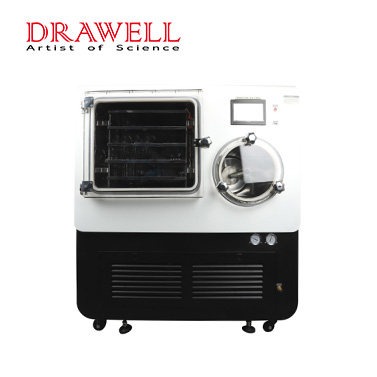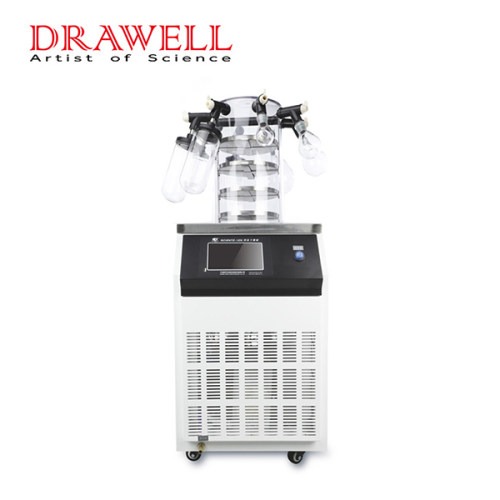Freeze drying, also known as lyophilization, is a sophisticated method used to preserve perishable materials, making it especially valuable in the food industry and scientific research. By maintaining the integrity, nutritional value, and structure of food, freeze drying has become an essential process for long-term storage and study. This article explores the science behind freeze drying machines and its applications in the food research.
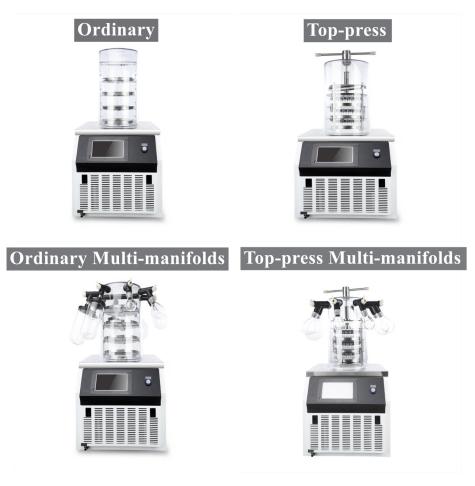
The Science of Freeze Drying
Understanding the science behind freeze drying is essential to appreciate how this method preserves food so effectively for research purposes. At the heart of freeze drying is the principle of sublimation, a process where ice transitions directly into vapor without passing through the liquid phase. This principle is pivotal in maintaining the structural and nutritional integrity of food during preservation.
Freeze Drying Process
- Freezing: The freeze drying process begins with freezing, where the food is subjected to extremely low temperatures, typically below -40°C (-40°F). This step ensures that all the water content within the food solidifies into ice. Freezing the food not only stabilizes it but also prepares it for the next crucial phase: sublimation.
- Primary Drying: Once the food is frozen, it is placed in a vacuum chamber where the surrounding pressure is significantly reduced. This low-pressure environment is vital because it lowers the temperature at which water can sublimate. With the vacuum applied, the frozen water in the food sublimates directly into water vapor. To facilitate this phase change, low heat is introduced. This heat energy is carefully controlled to ensure that it provides just enough energy to transition the ice into vapor without melting it into a liquid. This gradual and controlled heating is critical in preserving the cellular structure of the food, maintaining its original texture and appearance.
- Secondary Drying: The final stage in the freeze drying process is known as secondary drying or desorption. Here, any residual moisture that remains after sublimation is removed. This step involves raising the temperature slightly to drive off any bound water molecules that may still be present in the food. The end result is a product that is almost completely devoid of moisture, ensuring a long shelf life and stability.
Transitioning from the scientific principles to the practical applications, freeze drying offers numerous advantages over other preservation methods, especially in the context of research. Unlike traditional drying methods that use high temperatures, freeze drying operates at low temperatures, preserving the nutritional and sensory qualities of the food. This makes it ideal for research purposes where maintaining the integrity of the food’s original properties is crucial. Furthermore, the absence of high heat means that heat-sensitive nutrients and compounds remain intact, providing more accurate results in nutritional studies.
Lab Freeze Drying Machines in Food Industry
Lab freeze drying machines are the equipments that using freeze drying technique to remove water from food products while maintaining their structure, flavor, and nutritional value. This section dives into the applications, advantages and limitations of using lab freeze drying machines in the food industry.

Types of Foods in Freeze Drying Machines
Lab freeze drying machines are widely used in the food industry to preserve a variety of food items. These machines are particularly suitable for high-value or sensitive products due to their ability to maintain the nutritional content, flavor, and structure of foods. But there are also some foods unsuitable for freeze drying. Here are the details:
| Suitable or Unsuitable for Freeze Drying | Food Category | Examples |
| Suitable for Freeze Drying | Fruits | Strawberries, Blueberries, Bananas, Apples, Mangoes |
| Vegetables | Peas, Corn, Carrots, Broccoli, Spinach | |
| Meats | Chicken, Beef, Pork, Turkey | |
| Seafood | Fish, Shrimp, Scallops | |
| Dairy Products | Milk, Cheese, Yogurt | |
| Herbs and Spices | Basil, Parsley, Thyme, Oregano | |
| Prepared Meals | Pasta dishes, Soups, Stews, Rice dishes | |
| Snacks | Chips, Crackers, Cereal, Candy | |
| Beverages | Coffee, Tea, Fruit Juices (in powdered form) | |
| Unsuitable for Freeze Drying | High-Fat Foods | Butter, Oils, Avocado |
| High-Sugar Foods | Syrups, Honey, Jam | |
| Certain Fresh Vegetables | Cucumbers, Lettuce, Celery | |
| Soft Cheeses | Cream Cheese, Brie, Cottage Cheese | |
| Eggs (whole or raw) | Raw Eggs, Liquid Egg Mixtures | |
| Gelatinous Foods | Jellies, Gelatins, Puddings | |
| Alcoholic Beverages | Beer, Wine, Spirits | |
| Certain Dairy Products | Ice Cream (unless specially prepared) |
This form sheet provides a clear distinction between types of foods that are suitable and unsuitable for freeze drying, offering a quick reference for you if you are looking to utilize lab freeze drying machines.
Pros and Cons of Using Freeze Drying Machines
Lab freeze-drying machines offer several advantages in the food industry, foremost among them being the extension of shelf life through moisture removal, which inhibits the growth of bacteria and mold. However, there are notable disadvantages, such as the high initial investment and operating costs due to the energy-intensive nature of the process. Here are the detailed analysis:
| Aspect | Advantages | Disadvantages |
| Extended Shelf Life | Preservation of food for extended periods due to removal of moisture. | High initial investment cost. |
| Inhibits the growth of bacteria and mold. | Energy-intensive process, resulting in high operating costs. | |
| Nutrient Retention | Preserves most of the nutritional content, including vitamins, minerals, and antioxidants. | Time-consuming process, limiting production speed. |
| Retains flavor and texture of food products. | Texture changes in some foods, becoming more brittle or powdery. | |
| Convenience | Lightweight and easy to transport and store. | Rehydration requirement before consumption may not be convenient in all situations. |
| No need for refrigeration, ideal for various environments including outdoor activities and emergencies. |
Despite the advantages above, lab freeze-drying machines have the advantages of Versatility and Quality Preservation.
- Versatility: Suitable for a wide range of food products including fruits, vegetables, meats, dairy, and prepared meals. Can be used to create powders, flakes, or other forms of food products.
- Quality Preservation: Preserves the original flavor, aroma, and texture of food, enhancing overall quality. Reduces food waste by extending the shelf life of perishable items.
The table offers a concise overview of the benefits and drawbacks associated with utilizing lab freeze-drying machines in the food industry, aiding decision-making processes for you if your business considering this preservation method.

How Does Lab Freeze Drying Machines Work?
Lab freeze-drying machines consist of several components that work together to preserve food through the freeze-drying process. The main components include:
- Vacuum Chamber: This is the primary vessel where the freeze-drying process occurs. It is sealed to create a vacuum environment, allowing for the removal of moisture from the food.
- Condenser: The condenser is connected to the vacuum chamber and is responsible for collecting the evaporated moisture from the food during the sublimation process. It cools down the water vapor, causing it to condense into ice, which is then removed from the system.
- Vacuum Pump: The vacuum pump is used to create and maintain the low-pressure environment within the vacuum chamber. It removes air and other gases, allowing for efficient sublimation of water from the food.
- Heating System: Freeze-drying requires controlled heating to facilitate the sublimation of water from the frozen food. The heating system can be either electrical or use hot water or steam to provide heat to the food.
- Temperature and Pressure Controls: These controls are essential for maintaining precise temperature and pressure conditions within the vacuum chamber throughout the freeze-drying process. They ensure that the food is subjected to optimal conditions for effective moisture removal while preserving its quality.
Now, let’s delve into how lab freeze-drying machines preserve food:
The process typically involves three main stages: freezing, primary drying (sublimation), and secondary drying (desorption).
Firstly, the food product is frozen at very low temperatures, typically ranging from -50°C to -80°C. This freezing stage ensures that the water within the food solidifies into ice.
Next, the primary drying stage begins. The pressure within the drying chamber is significantly reduced, creating a vacuum. Heat is then gently applied to the frozen product, causing the ice to sublimate directly into water vapor without passing through the liquid phase. This sublimation process removes approximately 95% of the water content from the food.
Finally, in the secondary drying stage, the remaining bound water molecules within the food matrix are removed. The temperature within the chamber is gradually increased to around 20°C to 40°C, which allows the bound water to desorb and evaporate. This stage further reduces the water content to the desired level, typically between 1-4%.
Throughout the entire process, precise control of temperature and pressure is crucial to ensure that the food retains its original structure, flavor, and nutritional properties. The resulting freeze-dried food is lightweight, shelf-stable, and can be rehydrated easily for consumption. This method of preservation is particularly advantageous for high-value or sensitive food products where maintaining quality is paramount.
Conclusion
Lab freeze drying machines are invaluable tools in the food research industry, offering a reliable method for preserving and analyzing food samples. By understanding the science behind freeze drying and the operational mechanics of these machines, researchers can extend the shelf life of food products, retain their nutritional value, and explore new possibilities in food technology. Despite the challenges, the benefits of freeze drying make it a vital process in advancing food preservation and ensuring food security. If you are looking for buying a food freeze dryer for your lab, please consider Drawell freeze dryer. They can provide you high quality products with reliable service.

